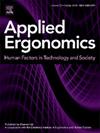预测驾驶员对安全舒适车辆控制转换的接管时间:备用容量和驾驶员特征的作用
IF 3.4
2区 工程技术
Q2 ENGINEERING, INDUSTRIAL
引用次数: 0
摘要
有条件自动驾驶要求驾驶员在收到接管请求后,在有限的时间预算内恢复车辆控制。准确预测驾驶员接管时间(ToT)对于根据不同场景的个人需求动态调整时间预算至关重要。本研究通过优化预测器的选择,解决了ToT预测模型在可靠性和可解释性方面的长期挑战。通过驾驶模拟器实验,我们使用类别提升模型研究了ToT、驾驶员特征和感知备用容量(pSC,一种来自任务-能力界面理论的认知结构)之间的关系。结果表明:(1)在考虑pSC的情况下,纳入13个额外的驱动特征并不能显著提高预测精度;(ii)个体特征影响驾驶员如何认知处理接管情景,其预测贡献可能与pSC重叠。这些发现表明,监测认知状态可能比广泛分析驾驶员特征更有效地进行ToT预测。这项研究为自适应接管策略的预测框架提供了关键的第一步,并为设计个性化的人车交互提供了指导。本文章由计算机程序翻译,如有差异,请以英文原文为准。
Predicting drivers’ takeover time for safe and comfortable vehicle control transitions: The role of spare capacity and driver characteristics
Conditionally automated driving requires drivers to resume vehicle control within constrained time budgets upon receiving takeover requests. Accurately predicting drivers’ takeover time (ToT) is essential for dynamically adjusting time budgets to individual needs across scenarios. This study addresses enduring challenges in reliability and interpretability of ToT prediction models by optimizing predictor selection. Using a driving simulator experiment, we examine the relationship between ToT, driver characteristics, and perceived Spare Capacity (pSC, a cognitive construct from Task-Capability Interface theory) using Category Boosting models. Results show that (i) incorporating 13 additional driver characteristics does not significantly improve prediction accuracy when pSC is already considered; and (ii) individual characteristics influence how drivers cognitively process takeover scenarios, and their predictive contribution likely overlaps with pSC. These findings suggest that monitoring cognitive states may be more effective for ToT prediction than extensive profiling of driver characteristics. This study provides a critical first step toward predictive frameworks for adaptive takeover strategies and offers guidance for designing personalized human–vehicle interactions.
求助全文
通过发布文献求助,成功后即可免费获取论文全文。
去求助
来源期刊

Applied Ergonomics
工程技术-工程:工业
CiteScore
7.50
自引率
9.40%
发文量
248
审稿时长
53 days
期刊介绍:
Applied Ergonomics is aimed at ergonomists and all those interested in applying ergonomics/human factors in the design, planning and management of technical and social systems at work or leisure. Readership is truly international with subscribers in over 50 countries. Professionals for whom Applied Ergonomics is of interest include: ergonomists, designers, industrial engineers, health and safety specialists, systems engineers, design engineers, organizational psychologists, occupational health specialists and human-computer interaction specialists.
 求助内容:
求助内容: 应助结果提醒方式:
应助结果提醒方式:


